I'm mostly a Mac user and I also really like Linux (especially Ubuntu), but I hate Windows. However, I'm occasionally required to use Windows at work, so I've found a way to make using Windows more enjoyable: to use Ubuntu (installed on VirtualBox inside of Windows) instead of Windows for everything except for the few tasks which require Windows.
So I have made this little How to Install Ubuntu on VirtualBox in Windows setup guide:
Contents
- Install VirtualBox
- Download Ubuntu 12.04 ISO file
- Create and configure a Virtual Machine
- Tweak Virtual Machine hardware settings
- Install Ubuntu in the Virtual Machine
- Make Ubuntu nicer to use in VirtualBox
- Using your new Virtual Ubuntu system
Install VirtualBox
- Download installer from: https://www.virtualbox.org/wiki/Downloads
- The version I am using is 4.2.4: http://download.virtualbox.org/virtualbox/4.2.4/VirtualBox-4.2.4-81684-Win.exe
Download Ubuntu 12.04 ISO file
- Download 12.04 LTS (12.10 is VERY SLOW in VirtualBox): http://www.ubuntu.com/download/desktop/questions?distro=desktop&bits;=32&release;=lts
Create a virtual machine
Hit New:
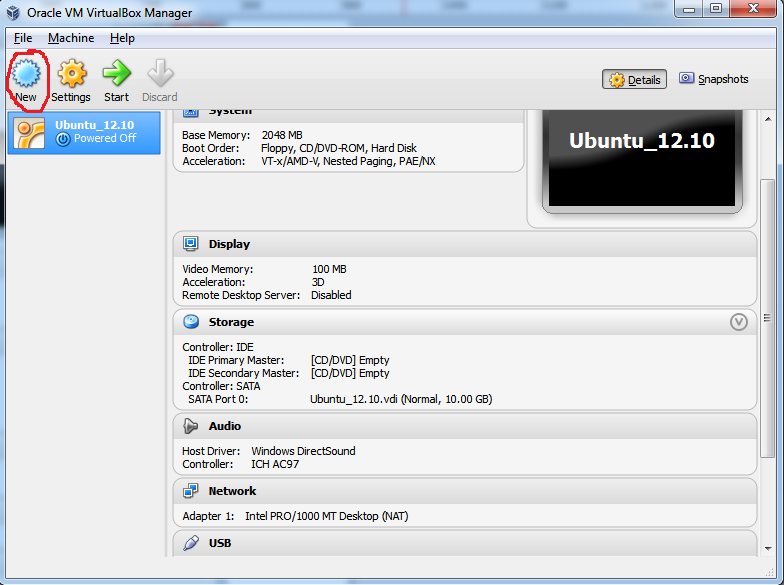
Type: Linux, Version: Ubuntu
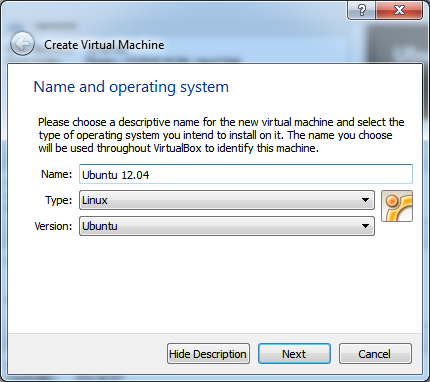
2 Gb memory (At least that's what I used on an 8Gb machine)
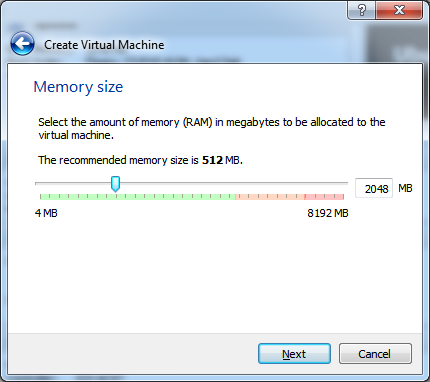
Create a virtual hard drive

Use VID Format

Create a Fixed size hard drive - they are faster
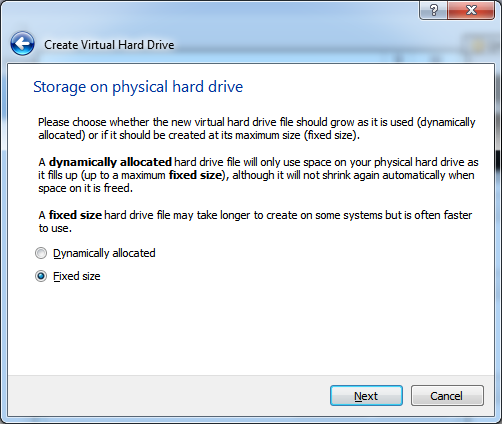
I allocated 10 Gb for my virtual hard drive
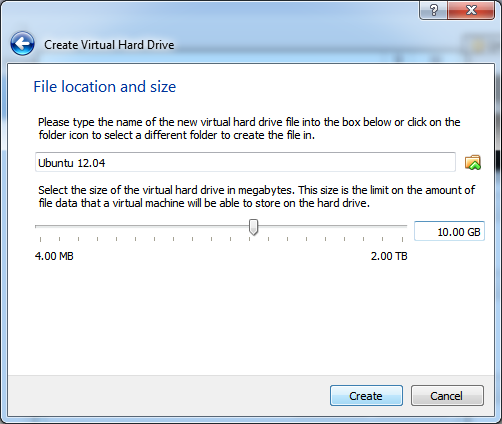
Select the Ubuntu ISO as a CD; Go to Settings -> Storage

Click "Choose Disk"
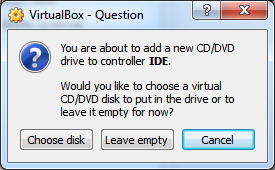
Choose the Ubuntu ISO file
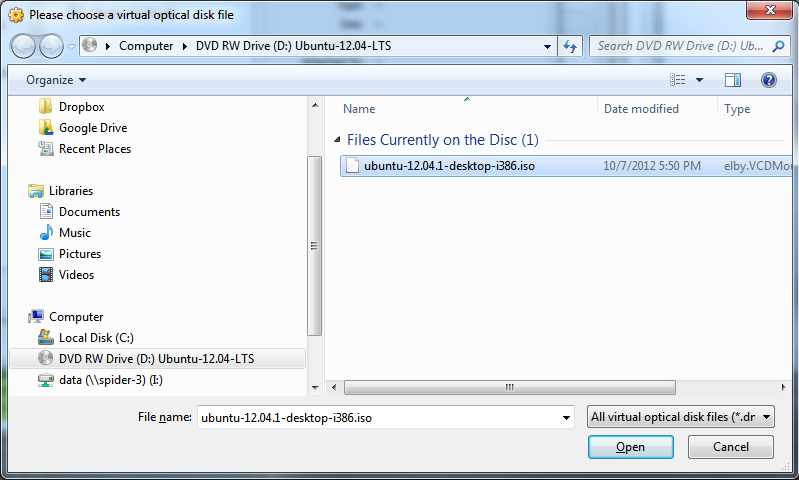
Then finish out the wizard
Tweak Virtual Machine hardware settings
Open the Settings
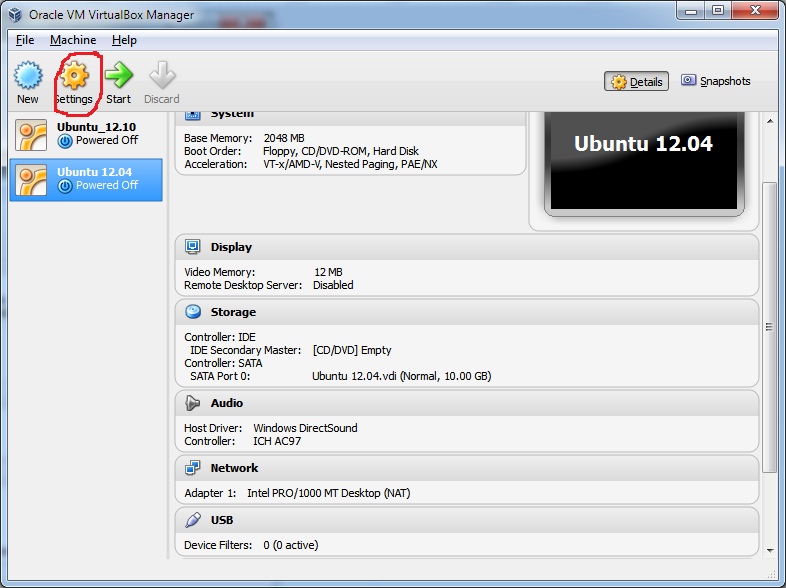
Add more Video memory and enable 3d acceleration

Default network settings worked for me
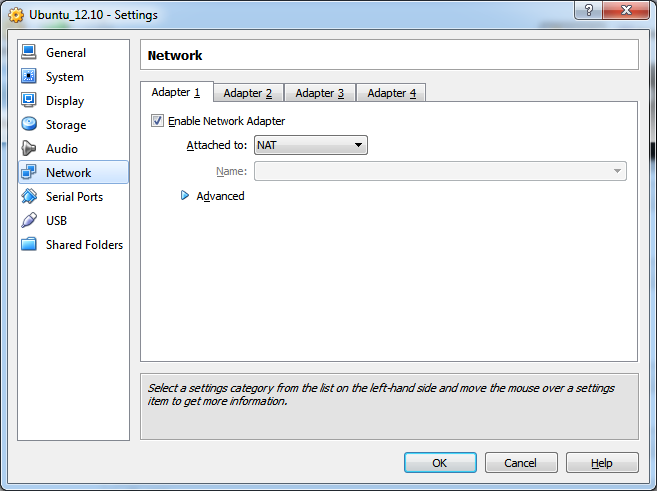
Add shared host drive. Later, this will allow you to mount your entire windows hard drive from Ubuntu

Enable copy/paste between Linux and Windows
Go to Settings - General - Advanced and set Shared Clipboard to be "Bidirectional".
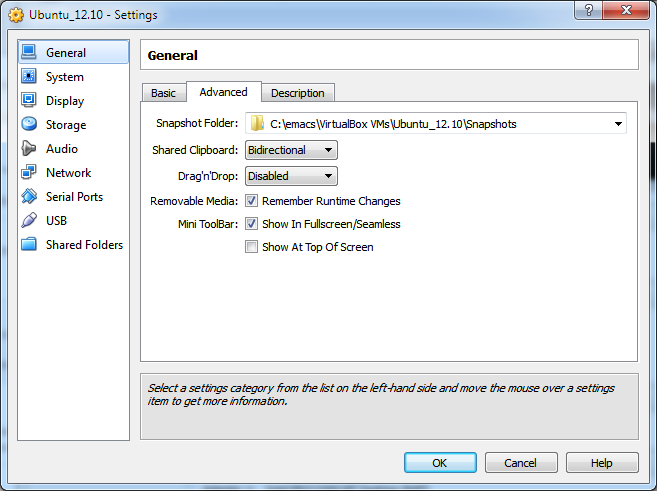
Now exit out of the settings. Time to install Ubuntu.
Install Ubuntu in the Virtual Machine
Click "Start" to start the Virtual Machine
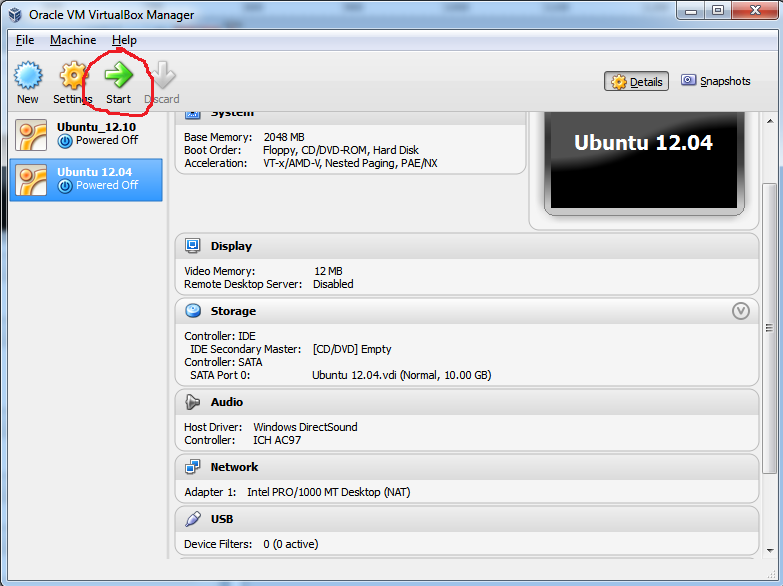
The Virtual Machine should see the "bootable" Ubuntu ISO image and run it automatically. If this works, you will soon see the Ubuntu installation screen

Ubuntu Installation Steps
The wizard will walk you through these, but here are the basic steps:
- Click "Install Ubuntu"
- Check "Download updates while installing" and Check "Install this third-party software" (and then click "Continue")
- Select "Erase disk and install Ubuntu" (and then click Continue)
- Note that this erases your virtual hard drive created just for Ubuntu (not your entire real computer hard drive)
- Click "Install Now"
- While installing, it will prompt you for some basic info like timezone, keyboard layout, etc. Just do what is best for you.
- Also, while installing, it will prompt you for "Who you are?" Make sure to pick a username and password which you will remember.
- Also, click "Require password on startup", because you will need this later when you switch to Xubuntu (assuming you want to switch - I recommend it for speed).
- When complete, click restart
- Right click on the CD looking thing near the bottom right of the VirtualBox window to remove the installation disk (the Ubuntu ISO) from the Virtual drive.
- Login when it restarts.
Make Ubuntu nicer to use in VirtualBox
Install "Guest Additions"
The Guest Additions allow Ubuntu to behave better inside of Virtualbox; for example, you can resize the VirtualBox window and Ubuntu will appropriately resize. Here are the steps:
- Click on Devices - Install Guest Additions (in the VitualBox window).
- Click "Run" on the window that pops up.
- Enter your password on the box that pops up and click "Authenticate"
Install Updates
You should get a popup asking if you want to install updates. If you do, install them.
Install Xubuntu
Xubuntu is a customized XFCE packages. It is much more lightweight than the default Unity window manager. I also prefer it to Unity
- Open the Terminal
- sudo apt-get install xubuntu-desktop
- Once that finishes installing, log out
- Click the Ubuntu button to switch to the Xubuntu window manage:

- Select "Xubuntu Session"
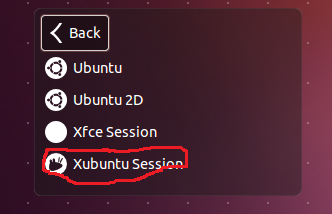
- Then log back in, and you should have a Xubuntu desktop
Add access to your entire Windows hard drive within Ubuntu
Run this command at the Terminal (the Terminal can be found under Accessories):
sudo mount -t vboxsf C_DRIVE /media/windows
This command must be run each time you start the Virtual Machine. I decided to write a script called mountw to run this script:
sudo cat "sudo mount -t vboxsf C_DRIVE /media/windows" > /usr/bin/mountw
sudo chmod a+x /usr/bin/mountw
Now I can just run "mountw" from the terminal when I want full access to my Windows hard drive.
The installation/configuration is complete!
Using your new Virtual Ubuntu system
You can, of course, just keep Ubuntu running in the VirtualBox window (which is what I do most of the time):

Or, you can also use "Seemless mode" by clicking "Host-L" ("Host" is typically the Right Control key, so Right Control+L), which lets you have mesh Linux and Windows windows right beside each other (without having the containing VirtualBox window). You can click Right Control+L again to get out of Seamless mode:
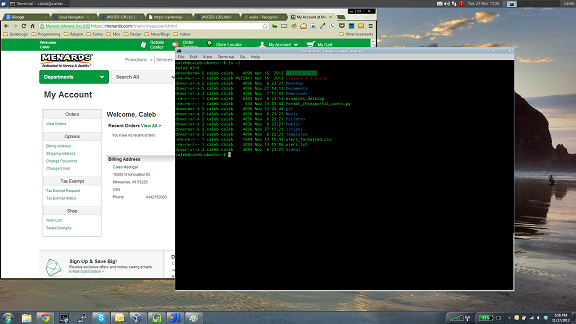
Lastly, if you want to stop using your Virtual Machine for a little while but don't want to turn it off, you can just hit "Right Control+P" to pause it.
Special thanks to Grant Rettke for helping me compile this guide.